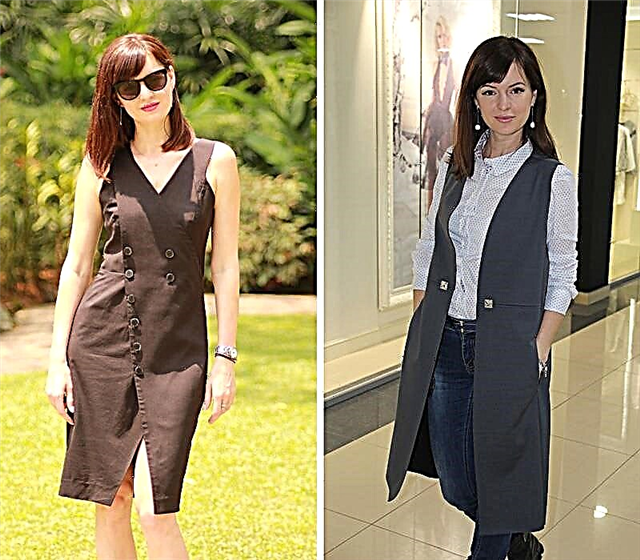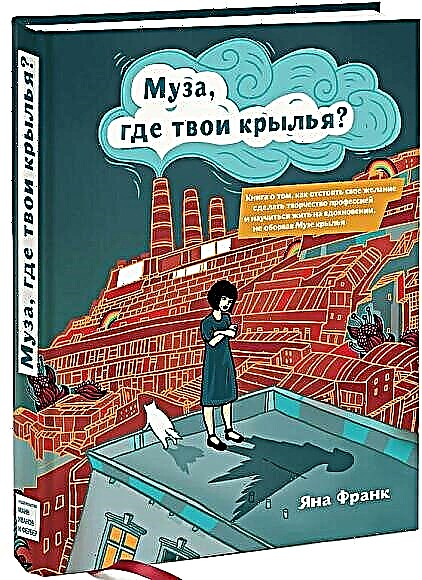The style of sportswoman has been at the peak of popularity for several years and is not going to give up its positions in the near future. One of the attributes of the style is strip decoration.

Lampas can be a finished on-line braid, which is presented in the market of accessories in a huge variety, or strips of fabric. Width varies from 0.5 cm to 10 cm.
Initially, stripes, like many other elements of the wardrobe, arose in military uniform. They served to identify command personnel in peacetime. Their color and width depended on the combat arms and changed over time.
In the mid-20th century, stripes migrated to sportswear. And in the 80s - 90s olympics with stripes became very popular when football fans began to wear them in large numbers, followed by representatives of pop culture.
Now stripes are experiencing a second wave of popularity. In the modern interpretation, stripes can be found not only in the styles that are natural for their use - military, sports and casual, but even in evening and business clothes.
They are coming back: 5 trends from the 1990s that are again relevant today
Do it yourself with stripes using our workshop. The master class was prepared on the example of the dress model No. 3C from the magazine Burda. Sewing fast and easy 1/2019.
- Special offer

- 1
- 2
- 3
- 4
Other Burda models that can be sewn with this finish:

- 1
- 2
- 3
- 4

- 1
- 2
- 3
- 4
- Special offer

- 1
- 2
- 3
- 4

- 1
- 2
- 3
- 4
Materials for work:

• Knitwear of the same density and texture (footer, jersey, cooler or fleece) in several colors;
• Ready-made circular knitted cuffs (if required by model);
• Threads in tone of stripes and the main fabric;
• Jersey or Super stretch knitting machine needles.
Devices for work:

• Transparent double-sided self-adhesive tape for temporary fixation of Wonder tape from Prym or a glue web on a paper basis;
• Masking tape;
• Marking devices - marker, soap or chalk;
• Long ruler.
Step 1. Preparing the stripes
1) Preparation of stripes using self-adhesive tape for temporary fixation from Prym.

Prepare knitted patches of suitable length.Lamp stripes can be cut both along and across the hinge columns, but on all stripes of the same product the same.
To prevent the edge of the knitwear from twisting, it can be glued to the table with masking tape. Mark the width of the stripes in parallel lines. The width of the stripes in the finished form in my example is 1.2 cm.

Glue Prym tape between the marking lines. My tape is 6 mm wide, I glued it in 2 rows.

Trim excess knitwear, leaving 6 mm allowances (half the width of the strip) on each side. First remove the paper from the Prym tape on one side, unscrew the seam allowance and press it down.

Similarly bend the second side of the strip.

If there is a larger jersey flap, then mark out in increments of 1.2 cm.

Glue Prym tape at 1-width intervals.

Cut the stripes between the glued tape.

Remove the paper from the Prym tape, unscrew the seam allowance and press it down.
2) An alternative processing option is stripes using a glue web on a paper basis.

Mark the lamp equal to the width of the web. In my example, this is 1.0 cm. Mark out the allowances for the hem, equal to half the width of the strip. Place the adhesive in the center of the wrong side of the strip blank. Iron without removing the paper layer.

Remove paper, bend allowances on the wrong side of the strip, and sweep.

Iron.
Step 2. Adjusting the stripes

Mark the center of the strip on the front of the sleeve. The marking passes through the highest point of the sleeve ridge and is parallel to the line of the shared line.

Place the center strip of the strip on the marking line, sweep.

Stitch the ribbon on both sides 0.1 cm from the folded sections. Mark the position of the extreme stripes of the strip. I have this distance is 0.7 cm.

Mark the extreme stripes of the strip along the marking line.

Stitch stripes of stripes to the edge.

When sewing stitches for the upper thread, use threads matching the tone of the strip; for the lower thread, use threads matching the tone of the main fabric. So the work will look neater.

Set up the hem and bottom of the sleeve.
How to work with knitted and knitted fabrics
How to sew knitwear on a sewing machine: 5 ways
The continuation of the master class, where you will learn how to process the bottom of the sleeve of a knitwear in three ways:
How to design the bottom of the sleeve in a knitwear: 3 processing options
The author of the master class and photo: Elena Lenkova

Lena has a higher and special education - a tailor of outerwear for men, women and children.
In clothes, he values individuality and thoughtfulness of the image, originality of cut. He likes to analyze modeling techniques and product processing technology. Leads his page on Instagram.
Lena teaches at the Burda Academy and teaches the Men's Shirts and Men's Trousers courses.
"The quality of processing and the interior decoration of the product are integral aspects of sewing."



